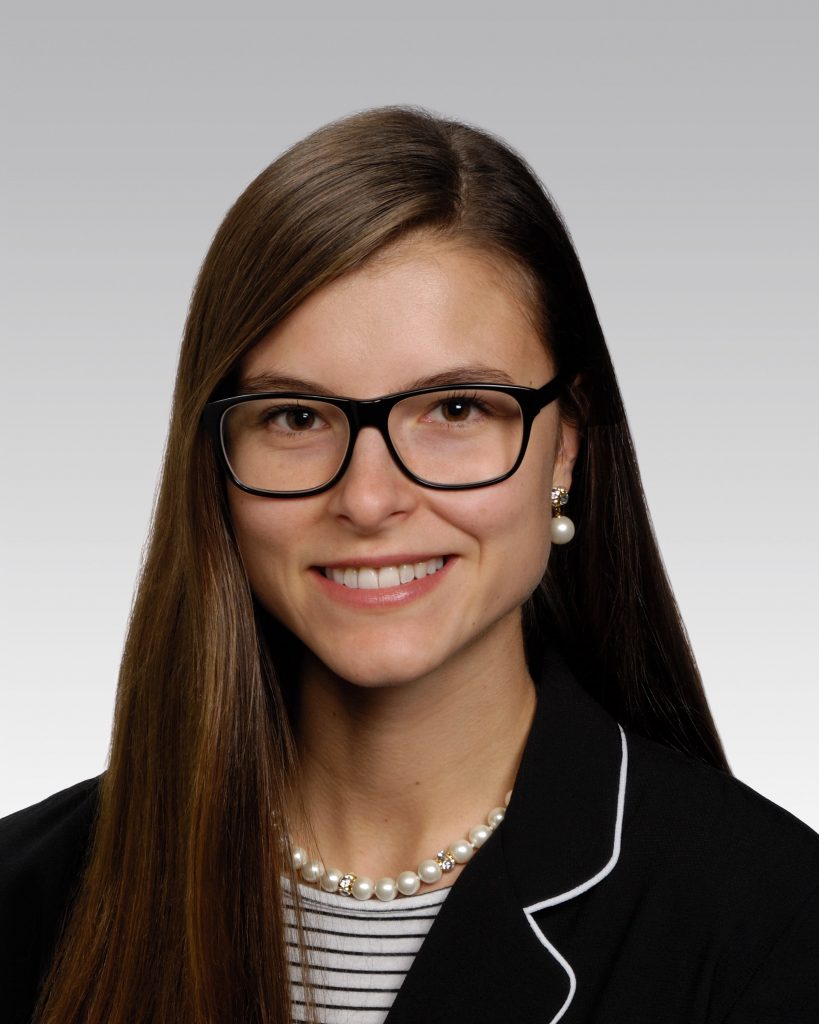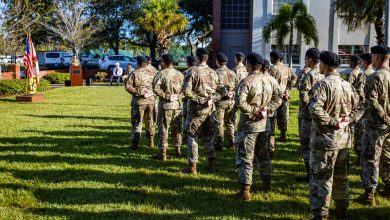The Quiet Impact
Wherever you look, Panthers are there, driving the technology and processes that drive society.
By Stephanie R. Herndon ’07
Florida Tech is relatively small as far as the student population goes. No doubt, that fact is what drew many students to the university in the first place. The diminutive scale allows for a sense of community, individual attention and hands-on experiences not feasible at larger schools. These attributes have been part of the Florida Tech experience since its beginning.
Enthusiastic efforts of the university’s staff, the indelible influence of the faculty and impressive endeavors accomplished by alumni have helped increase Florida Tech’s notoriety considerably over the last six decades. Even still, Florida Tech is not yet a household name. Florida Tech graduates are an exclusive few in the world, making it a rare treat to discover a fellow alumnus at an airport, in the workplace or, frankly, anywhere.
However, the university’s quiet yet permeating impact is felt in all corners of the world. Wherever you look, you will see something worked on by a Panther, sending ripples of our effect into our communities—with a paw print at the epicenter.
Panthers are behind the rockets soaring into space, the forces and technology safeguarding our nations, the weather alerts keeping us informed and prepared, the bridges you drive over every day. They’re behind the strategy that drives our businesses, the sports you cheer for, the transportation getting you to the destination, the entertainment you turn to for a much-needed break—and so much more. You may not always realize it, but Florida Tech’s alumni are the people behind the things we use or see every day.
GPS
Perhaps the most ubiquitous element in our lives is GPS. Most people recognize GPS for turn-by-turn directions but would be surprised to learn that it is used to grow food, forecast the weather, route phone calls and distribute electricity. And every GPS satellite ever launched has relied on technology made by L3Harris Technologies.

Headquartered in Melbourne, Florida, L3Harris has a longtime history with Florida Tech and employs over 800 Florida Tech alumni. One of those alumni is Lindsay Isaac ’18, ’19 M.S., a communications specialist with the company.
“Every time you turn on a light switch, check the weather or a map on your phone, make a purchase or call a friend, you’re relying on the Global Positioning System (GPS),” Isaac says. “ATMs, cash registers and even entire stock markets depend on GPS because it is the most accurate timekeeping method on Earth.”
GPS has transformed our lives. Gone are the days of writing down directions and keeping folded maps in the glove box. Parents can now easily track where their children are at any time via smartwatches. Consumers can watch their Amazon shipment make its way down the street—only three stops, two stops, one stop away.
It is up to Isaac, who graduated with a bachelor’s degree in communication and a master’s degree in global strategic communication, to tell the story of these and other technological feats that L3Harris—and those Florida Tech alumni who work there—undertake every day.
“L3Harris’s technologies impact our daily lives in surprising and far-reaching ways—even outside of GPS,” she says. “Our innovative space antenna solutions, for example, make it possible for you to watch your favorite television programs, access the internet and chat on the phone with friends and family.”
Isaac is most excited about how her company is safely integrating drones into national airspace, potentially saving time, money and lives.
“Most drone operations are currently limited to short distances within the remote pilot’s line of sight,” she says. “By enabling safe, routine beyond-visual-line-of-sight (BVLOS) operations, L3Harris is unlocking the benefits of drone technology for applications as varied as critical infrastructure inspection, emergency response, package delivery, precision agriculture and even urban air mobility.”
Isaac says that studying communication at Florida Tech prepared her well for being a “creative” in a tech-dominated community. She gravitated toward the university and L3Harris because they are both places where creativity and technical prowess coexist.
“People often view rigor and imagination as mutually exclusive, but they’re not, and we need both. In fact, understanding the value of both art and science—i.e., appreciating the quantitative while also appreciating the qualitative—has opened a lot of doors for me.”
AI
Indeed, the right brain and left brain need not operate independently, siloed from one another. Logic and creativity not only coexist in nearly all things but often support and strengthen each other. Artificial intelligence is at that intersection of creativity and calculation.

Michaeel Kazi ’07, Ph.D., weaves the two together perfectly. He works for LinkedIn as a software engineer on AI foundations, primarily on search-related projects.
In the recently published paper “Incorporating User Feedback into Sequence-to-Sequence Model Training,” published in CIKM ’20: Proceedings of the 29th ACM International Conference on Information & Knowledge Management, Kazi and his LinkedIn colleagues outline their process of using a deep-learning Seq2Seq model with query suggestion to offer several alternatives for users.
When a LinkedIn user performs a search, suggestions for related searches display with the search results. When a user selects a suggested alternative, feedback is given to the system and incorporated by adding a novel pairwise ranking loss term during training. In layman’s terms, Kazi is training LinkedIn’s search engine to better predict what you’re trying to find and help you find it faster.
LinkedIn is one of the most popular networking sites available, tailored less to social networking and more to professional networking. The site allows users to build a career profile—an expanded résumé, if you will—follow industry resources, connect with professional connections, post content, send direct messages and look for open positions. It’s considered by many to be the go-to source for career networking. Since LinkedIn has over 760 million users, you probably already know this.
A large part of what makes LinkedIn such a robust tool lies in its search engine. Here, a user may search for current or potential connections by name, current or past company, education level, school, job title, location, industry and more. According to LinkedIn, 40 million people use the site each week to search for a job—and that does not count searches for people, companies or groups.
Kazi is the man behind this technology, making it better every day.
“At LinkedIn, we are very focused on quality assurance,” says Kazi. “We have plenty of metrics by which to measure changes. Together with our product managers, we set a high bar for improving the member experience.”
He has seen the company keep up with a fast-changing software environment over the past few years, which is tricky to do at their scale while maintaining excellent service, but says, “I think there will be even more work and innovation around how we leverage AI at scale for our various offerings across the platform.”
Kazi predicts that the LinkedIn newsfeed will become a more productive tool for brainstorming and sharing ideas across groups and communities of shared interests, and he hopes he can continue to make positive changes to the job search experience.
“For anyone, being able to find a job you are uniquely qualified for is something that’s very important both in good times and bad.”
Kazi earned a Ph.D. in mathematics from the University of California Berkeley after completing his bachelor’s degree in computer science and applied mathematics at Florida Tech. He credits Florida Tech and programming contests while an undergraduate for his computer science fundamentals.
“That aspect was invaluable in getting jobs in this industry. I also learned quite a bit on the software engineering and testing aspect of things. [Florida Tech] also inspired me and got me into an excellent graduate school where I picked up more technical depth.” He adds, “On a concrete note, I remember the computer facilities at [Florida Tech] were top-notch and gave me a head start on using Linux.”
Cybersecurity
Linux, the open-source operating system, is oft-used in programming because it is a proven, secure baseline system. For this reason, many programmers use Linux as the basis of cybersecurity tools.
In 2019, over 1,500 data breaches took place in the U.S., exposing nearly 165 million records. As technology envelops more and more of our lives, the need for cybersecurity continues to grow. The world around us is more connected than ever—from watches to refrigerators, shoes to exercise machines, toothbrushes to vehicles.
Not only do our vehicles represent significant investments, but they also transport precious cargo—the most precious being ourselves and our families. For this reason, automakers tout safety features as significant selling points. One of the newest safety features hitting the market isn’t for your physical safety—it’s for your digital security.

Katarina Borovina ’19 M.S. is one of the people making sure your vehicles remain safe against cyberattacks. She works for Hyundai Kia America Technical Center as a vehicle cybersecurity engineer, creating and refining the security requirements and specifications for vehicle systems and exposing vulnerabilities.
The threats to connected vehicles vary from vehicle to vehicle, but Borovina says the most common one is having the vehicle’s drive systems taken over. Over the last decade, hackers have managed to disable fleets, steal private data and financial information, cut brakes and control lights, locks, alarms, horns, sunroofs, wipers and engines while vehicles were in motion.
“We take care of this so consumers don’t have to worry about it,” says Borovina.
Her current project is so new it has yet to deploy to vehicles on the market, so good things are on the horizon to keep drivers protected. Hyundai says that by next year, some 250 million connected cars will be on roads throughout the world and that even if you don’t drive a connected car, all cars produced today contain at least one computer.
In 2017, Borovina’s company partnered with Cisco to produce infrastructure that encompasses advanced security to reduce hacking. In fact, most automakers are adopting new cybersecurity technologies as they add more connectivity to their vehicles. This makes roles like hers more critical than ever.
“This role is extremely important for every individual,” Borovina says. “Unfortunately, in these odd times, it’s hard to tell what life would be like without this field. In my opinion, it will only become more difficult for us to mitigate threats, but the field is rapidly developing and keeping up well on the safety aspect.”
Keeping nimble and ahead of potential threats is of utmost importance, and Borovina says Florida Tech has prepared her well.
“It pushed me to get everything I was looking for. My mentors prepared me for the worst-case scenarios in the cyber field.”
These and tens of thousands of other Florida Tech alumni are making a difference in people’s everyday lives around the world. No matter where you look, you see the mark of Panthers—sometimes out in front and sometimes behind the scenes—their impact can be felt everywhere. So, to all the alumni reading this, be proud. You, too, are part of the quiet impact Florida Tech is having on our world.
This piece was featured in the winter 2021 edition of Florida Tech Magazine.






